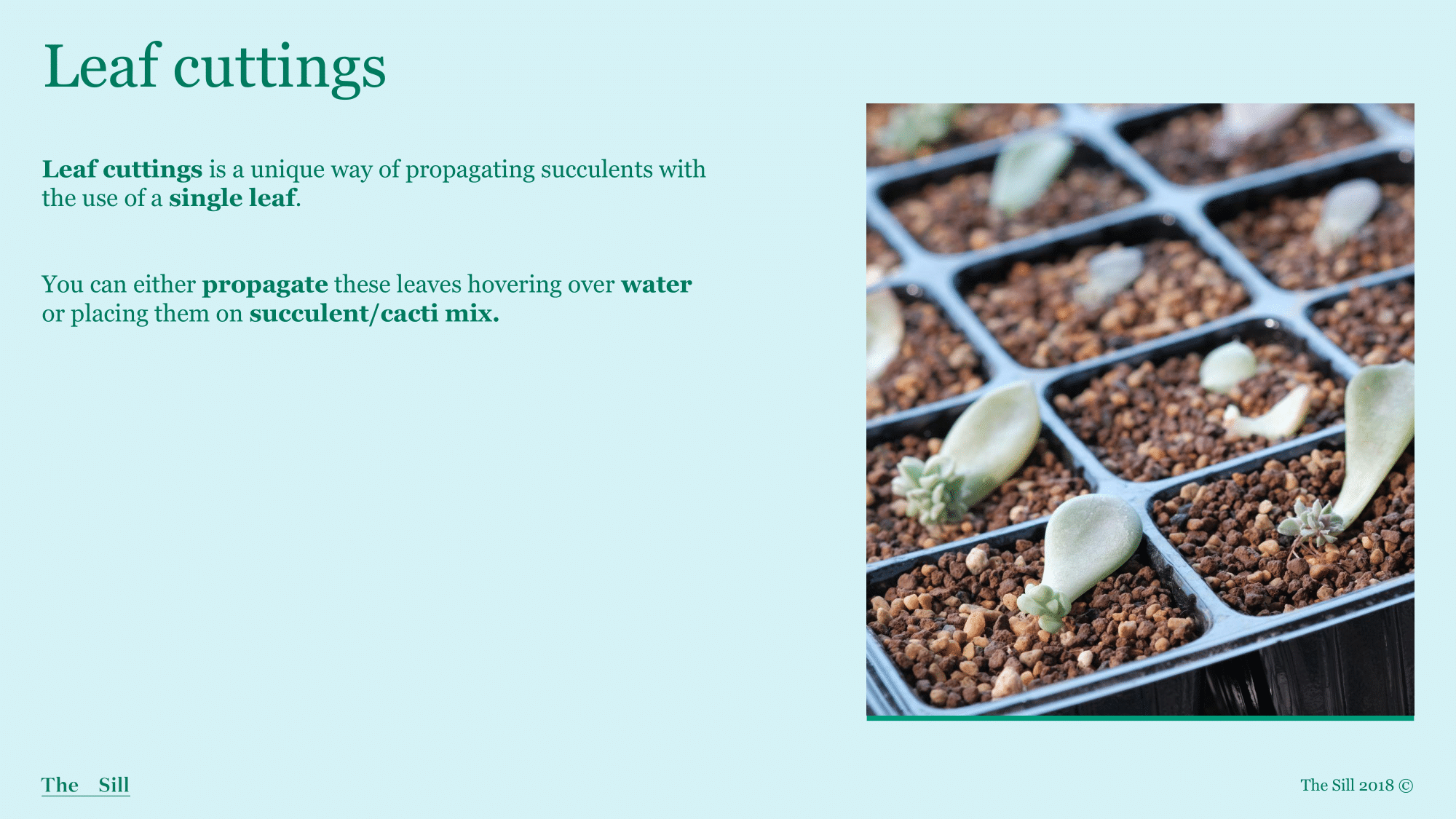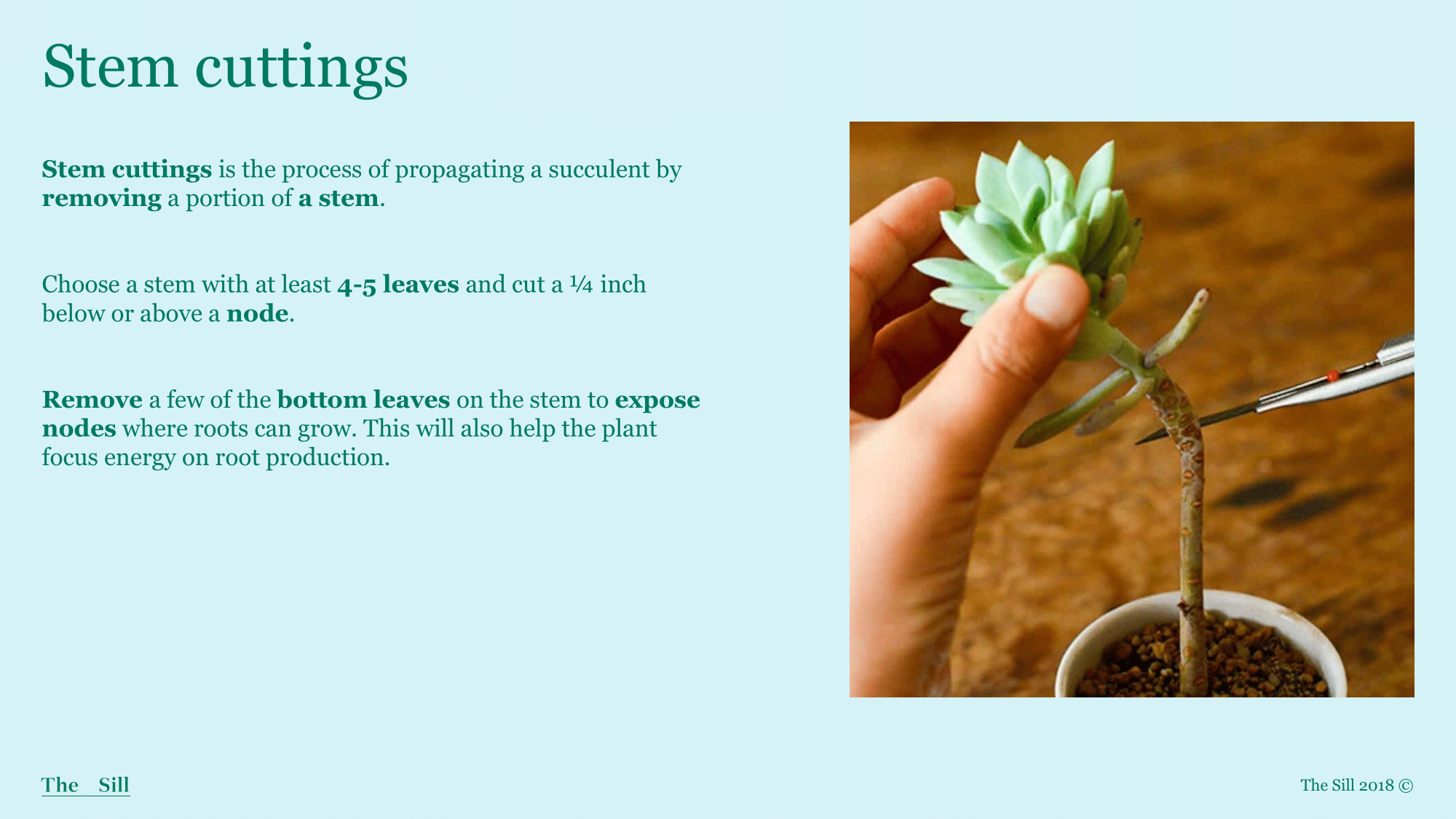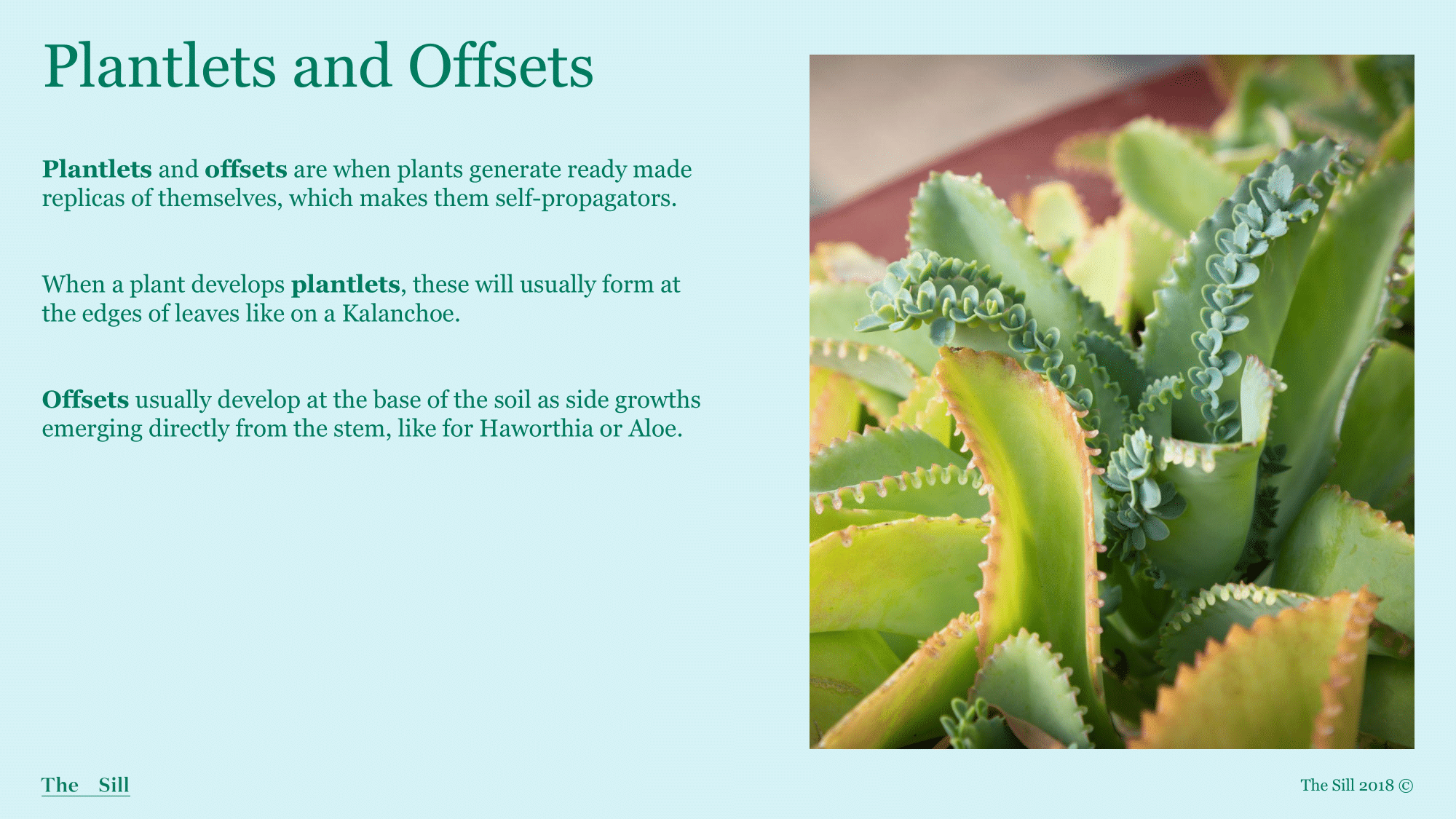Propagation
Part 3 of 3

Leaf Cuttings
Succulents can be easily propagated with the use of a single leaf removed from the plant, allowed to callous over for a day or more, and then placed back onto moist potting mix to start rooting/develop new growth. You can also propagate succulents by placing plastic wrap over the opening of a glass vessel filled with water secured with a rubber band. A small hole can be poke so the end of the leaf is hovering over the water (not touching it). Overtime you’ll see roots starting to form growing toward the water where it can then be planted into soil.
Or you can propagate by leaf cuttings by just placing the leaf on top of potting mix (like in the photo) and water when dry. Norally, roots will push out first into the soil, and then new growth will start to develop at the tips.

Stem Cuttings
Stem cuttings are normally taken on succulents that have grown leggy overtime.
After you take your stem cuttings, you can place it in a glass vessel filled with water so the bare stem/nodes are submerged in water. You don’t want the top leaves to be in water. Place in bright indirect light, and refill water when it gets low.
Or, you can insert the cutting into a moist potting mix. Place in bright indirect light, provide higher humidity, and water when the top 2-3 inches get dry. Rooting hormone can be used if desired, but isn’t 100% necessary for cutting to take root.

Plantlets and Offsets
- Offsets - Usually have roots that have formed already beneath the soil. Therefore, you can either let these offsets grow with the mother plant, or remove them by root dividing at the time of repotting and plant them separately.
- Plantlets - May have roots that have already formed if you leave them with the mother plant long enough. If already rooted, you can cut/pluc the plant from the mother plant and plant it in potting mix and treat as an adult plant.
Examples of plants that develop plantlets include Kalanchoe “mother of thousands”, Opuntia cacti.
Examples of plants that develop offsets at the soil include Aloe vera, Haworthia.
- 1. Succulents
- 2. Care
- 3. Propagation
